Just like Jon Snow before an attack on Winterfell, you need to prepare for your seasonal rush so you can thrive instead of just survive the winter.
And yes, the battle for outstanding customer service is often just like the stories in Game of Thrones.
This is because customer support tickets can increase by 42% for retailers during this time of year, putting a massive strain on your support team. Expectations are high, stakes are even higher, and you’re vying against stiff competition for consumer dollars.
If you don’t deliver, your competitors will. You also want to make sure your CSAT (Customer Satisfaction) score isn’t impacted too much, because, unfortunately, after a negative experience, 51% of customers will never do business with you again.
Read on for 7 tips on how you can start preparing to beat the seasonal rush, and keep your CSAT score as high as a dragon can fly.
 1. Review your tickets from last year
1. Review your tickets from last year
Just like in Game of Thrones, getting the jump on your enemy (ahem, we mean customer) gives you the advantage of having more time to prepare. You won’t be caught unawares when the flood of issues comes in.
If you start planning now, you can use this opportunity to carefully review your support conversations from last year. What were the most common problems? How could you have solved these issues before they ever entered your team’s radar?
A strategic approach will give you more insight into the kind of issues that take up the most support hours, and you can think of a better plan to tackle them. “Don’t dwell on what went wrong. Instead, focus on what to do next. Spend your energies on moving forward toward finding the answer,” says Denis Waitley, American author and motivational speaker. To do better, we need access to our past errors in order to understand them.
 2. Review customer feedback
2. Review customer feedback
Hopefully, you’re actively interested in what your customers think of the service you provided. You may have even sent them a survey asking for some more specific feedback. A CSAT (Customer Satisfaction) survey is an ideal tool for gathering more feedback from customers about their experience with you. It measures how customers feel about you at a specific moment in time.
Review your CSAT survey feedback from the seasonal period last year for any helpful suggestions and comments you can incorporate into your seasonal customer service strategy. Where did you create delight, and how can you do more of that? After all, customers who have had their issue successfully resolved are overall more satisfied than those who never had a problem in the first place.

3. Hire more people
If you’ve streamlined your processes already, your existing support staff can’t create more time out of thin air. When they’re stretched to the limit during the seasonal rush, it makes sense to have more hands on deck. Typically, more than 768,000 seasonal staff are hired at this time each year in the US.
With higher customer service ticket volumes meaning a lot of extra work, it makes sense to hire more staff – at least temporarily over the holiday season. But you’ll need to start training early. December 23rd is no time to start teaching someone their new customer service role. The stakes are high, and you need staff who know your business reasonably well, or they’ll be likely to create more problems than they solve.
 4. Create an effective onboarding playbook
4. Create an effective onboarding playbook
Hiring new staff naturally costs money, but you can offset some of these costs with better Knowledge Management. For example, creating a killer onboarding playbook that new staff can use to learn information will save you tons of time.
New employees always take some time to get up to speed. An onboarding playbook will speed things up because they won’t have to search for information. It also means your existing team can keep up their usual levels of productivity. Include things in your playbook like team-related information, team roles and responsibilities, product information, important policies like returns and refunds, and anything else relevant to your new hires.
 5. Invest in internal knowledge base articles
5. Invest in internal knowledge base articles
Like the onboarding playbook, effective internal documentation means that employees can find information on their own instead of having to ask a coworker. After all, sharing knowledge improves the productivity of team members by 35% – and that productivity is sorely needed during the seasonal rush!
Having a Knowledge Management program means that everyone is on the same page. You can help customers more effectively by coordinating your team so they are a well-oiled machine. 67% of customers said an agent’s knowledge or resourcefulness was key to a good experience, so creating good internal documentation is totally worth the effort!
 6. Create a customer service FAQs
6. Create a customer service FAQs
Like new employees, your customers will also have lots of questions at this time of year. You’re likely to get a big influx of new customers, so make an FAQs page especially for seasonal orders. Link to your FAQs from somewhere your customers will likely have questions – such as the product page, the billing page, or in their post-purchase confirmation email.
While you’re at it, make sure your self-service customer knowledge base is up-to-date. Then your customers can find the information they need, 24 hours a day – even while your agents are sleeping/recovering from the madness. Enhancing your customer onboarding process also helps your new customers, who are more likely to make mistakes when ordering. Make it deliriously easy for customers to exchange and return items, and they’ll love you for it.
 7. Plan a holiday rota for reps
7. Plan a holiday rota for reps
Employees need to take time off during the holidays to be with their families and other loved ones. People also tend to take more sick leave around this time of year. Plan a sensible holiday schedule to make sure your shifts suit everybody, and this will also make your seasonal strategy more sustainable in the long-term. Scheduling properly helps you anticipate larger volumes of enquiries, and avoids them building up to an unmanageable proportion.
While we’re on the subject, support your support team at this time of year. Reward them for their hard work with extra time off, or treat them to an elaborate meal. “Always treat your employees exactly as you want them to treat your best customers,” said business expert and author Stephen Covey.
Scaling for success
Just like the characters in Game of Thrones, customer service pros know that having a plan helps them win the battle of the seasonal rush. It’s not so much about doing anything brand new, as it is optimizing your existing processes so they can operate at a bigger scale.
It’s about leveling up your operations to cope with the increased pressure.
All this effort is worth it – customers with great experiences spend than those with bad experiences. That’s one of the reasons why we care so much about CSAT score as a measure of success.
We’ve put together a resource with all 11 templates so you can keep your customers content during your time away.










